Sloths are fascinating creatures with a unique claim to fame: their incredibly slow movement speed.
You have to wonder: what does an animal as sluggish as the sloth eat? How can it catch prey when it’s incapable of the quick strikes and sudden ambushes predatory animals are known for? Does this mammal even eat meat, or does it feed solely on plant matter?
We’ll be answering these questions and more in today’s article. Before we get into what kinds of food sloths consume, however, let’s get to know these enigmatic creatures a little better!
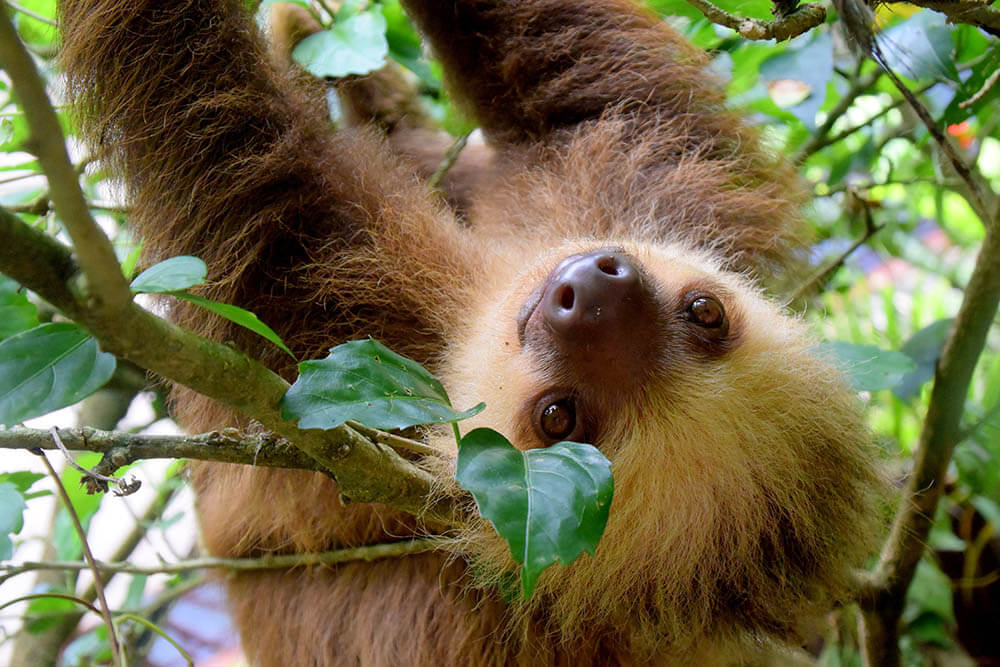
Introducing the Sloth
A medium-sized mammal that lives in the rainforests of Central and South America, the sloth moves so slowly that it often seems like it’s stuck in perpetual slow motion. In fact, this creature is the world’s slowest-moving mammal. Aside from being speed-challenged, the sloth is also known for its adorable face and long, scary-looking claws.
Here are more facts about the sloth!
Sloths are super slow
Sloths are ridiculously slow, so much so that it could take an individual almost an entire day to cover a distance of 40 yards or less.
Strangely enough, these creatures are amazing swimmers, capable of moving more quickly in the water than in the trees or on land.
Sloths spend most of the day sleeping
Sloths spend a lot of time hanging from the branches of tall trees, where they sleep for as many as 15 to 20 hours per day. They use the remaining time to eat food available in the canopies.
Six sloth species exist
There are six sloth species divided into two families: the Bradypodidae and Megalonychidae, which are both part of the Pilosa order.
Belonging to the Bradypodidae family is the Bradypus genus of three-toed sloths a.k.a. three-fingered sloths, which include:
- Brown-throated three-toed sloth (Bradypus variegatus)
- Maned three-toed sloth (Bradypus torquatus)
- Pale-throated three-toed sloth (Bradypus tridactylus)
- Pygmy three-toed sloth (Bradypus pygmaeus)
And belonging to the Megalonychidae family are the following two-toed sloths a.k.a. two-fingered sloths:
- Hoffmann’s two-toed sloth (Choloepus hoffmanni)
- Linnaeus’s two-toed sloth (Choloepus didactylus)
Some sloth species are endangered
Out of the six sloth species mentioned above, two are in danger of vanishing from the planet.
To be specific, the pygmy three-toed sloth is critically endangered, while the maned three-toed sloth is vulnerable (close to becoming endangered).
Deforestation is the biggest threat to these two sloth species’ existence. These creatures totally rely on their rainforest environment for survival, so the more humans destroy these trees, the more their populations plunge.
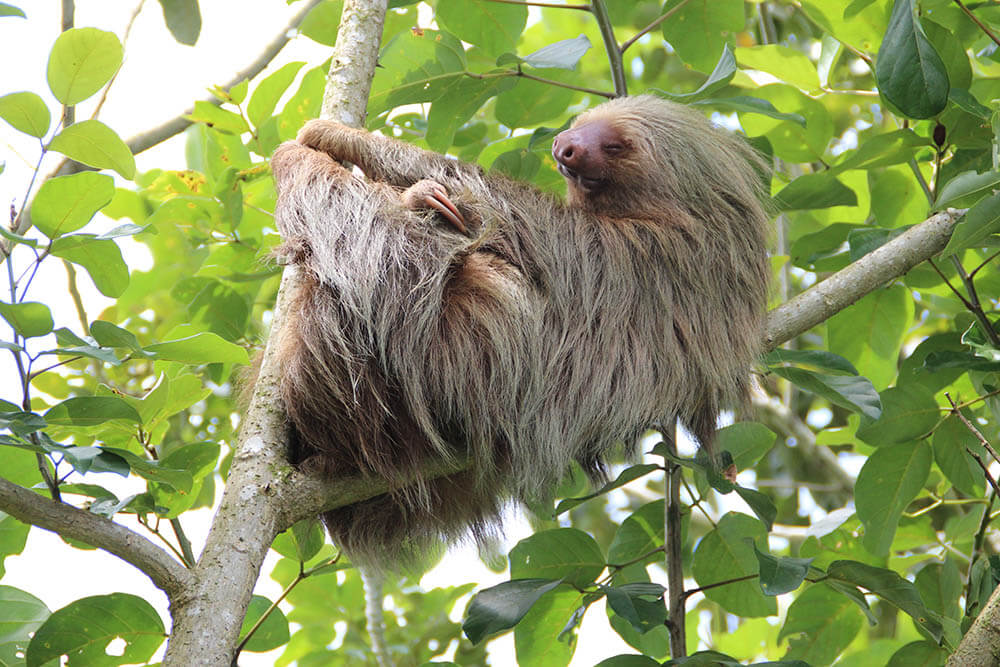
The Sloth’s Diet
Sloths are primarily herbivorous, which means they mostly feed on plants.
To be more specific, sloths are folivores – herbivores whose specialization is the consumption of leaves. Because these creatures usually live in Cecropia trees, we previously believed they ate Cecropia leaves only. However, we’ve since spotted them hanging around in various other tree species, so we know they enjoy many kinds of leaves.
It’s now known that sloths consume the leaves of over 90 different types of trees. Nevertheless, any individual sloth typically rotates between a dozen to half a dozen tree types. Each sloth inherits its preferences from its mother.
Sloths are also known to eat shoots, buds, and fruits.
Below, we list specific examples of the plant matter that sloths eat categorized according to sloth genus.
Plants three-toed sloths eat
- Apocynaceas (Mandevilla sp.)
- Bombacaceae
- Cacao leaves and pods (Theobroma cacao)
- Cecropia spp.
- Chilamate (Ficus insipida)
- Colorado (Luehea seemannii)
- Euphorbiaceae
- Fig trees (Ficus spp.)
- Moraceae
- Sangrillo (Pterocarpus officinalis)
- Sapotaceans (Micropholis venulosa)
Plants two-toed sloths eat
- Barrigon flowers and leaves (Pseudobombax septenatum)
- Bobacaceae flowers
- Espave (Anacardium excelsum)
- Jobo (Spondias spp.)
- Liana
- Poró (Cochlospermum vitifolium).
Meat
Interestingly enough, these mammals can be omnivorous, as researchers have seen them also consuming animal matter such as insects, tiny lizards, bird eggs, and carrion.
Thanks to their exceeding slowness, however, sloths make poor hunters and thus rarely eat meat. They can only catch and consume easy prey – those that move as slowly as they do.
Water
Regarding their hydration needs, sloths get most of their water from fruits. They also lick the moisture off leaves.
However, sloths that inhabit mangrove areas drink from large bodies of water, which they also use as a toilet and for swimming.
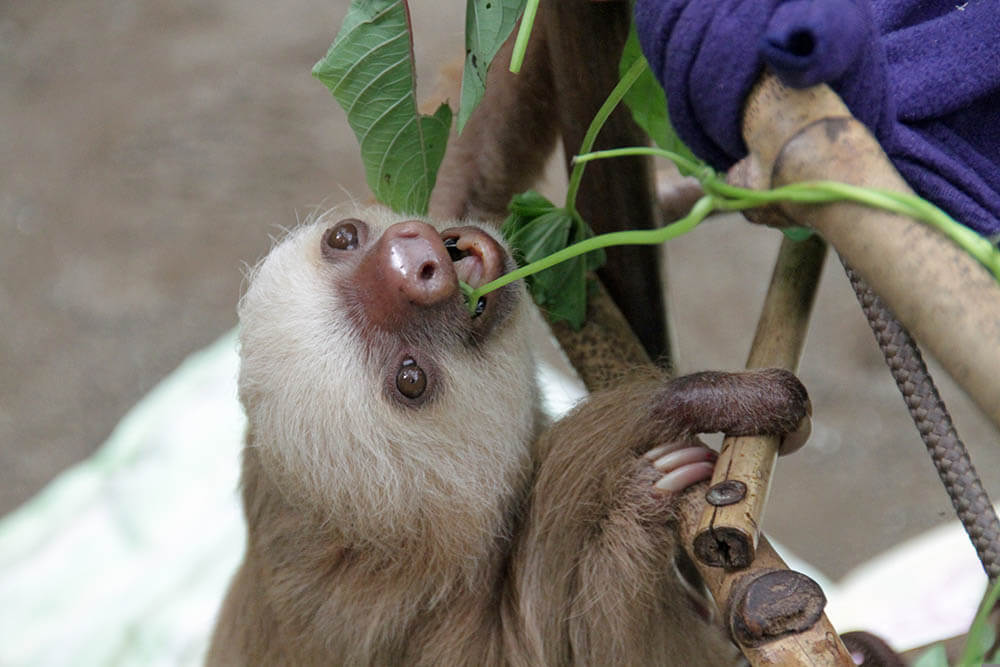
More Facts Related to the Sloth’s Diet
Here are more facts related to the sloth’s eating habits!
Food accounts for most of a sloth’s weight
If a sloth eats well, the food in its stomach makes up around two-thirds of its body weight.
Digestion takes ridiculously long
The sloth’s digestive process is never in a hurry, taking up to a month or more to process the food the creature has ingested.
The sloth’s diet isn’t energy-rich
Sloths eat mostly leaves, and leaves don’t provide them with a lot of energy. This is one of the reasons they have to be economical when it comes to movement and energy usage.
The sloth’s stomach evolved to digest plant matter
The sloth’s stomach has multiple compartments, which are specialized to digest plant matter. They’re particularly effective at breaking down cellulose – the tough material that’s a major component of plants.
Sloths have a slow metabolism
Why are sloths so lethargic? It’s primarily because their metabolic rate is exceptionally low – around 40% of what’s generally expected of a creature their size.
They also have a low body temperature of between 86 and 93 degrees Fahrenheit (or 30 and 34 degrees Celsius) when active. These temperatures drop even further when they’re at rest!
For these reasons, sloths don’t need to eat or drink that much. And because sloths are so slow-moving, they don’t need to ingest too many calorie-rich foods.
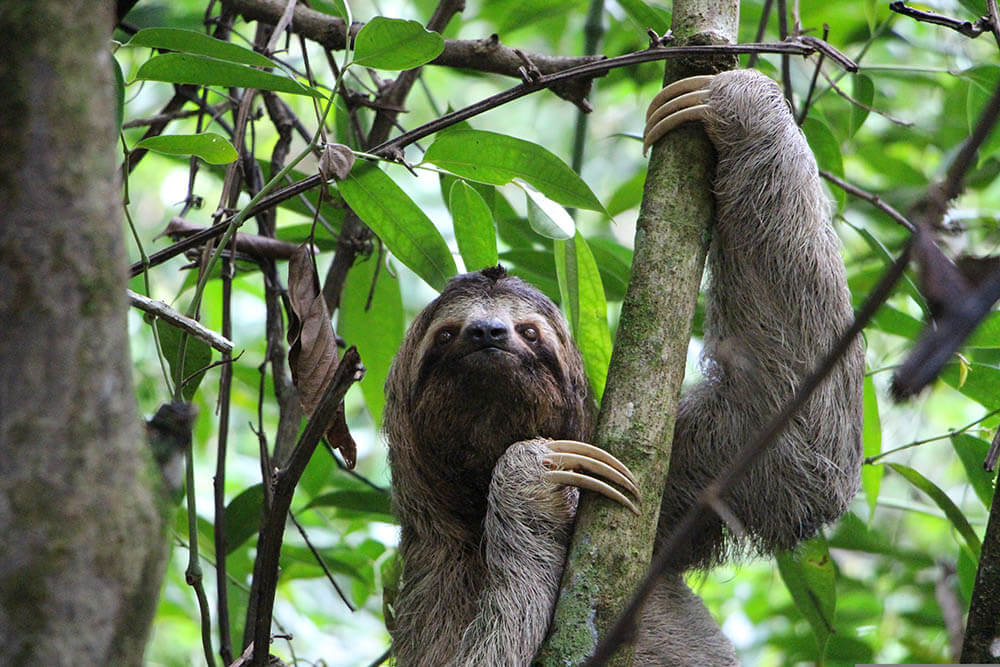
Can You Keep a Pet Sloth?
In the U.S., it’s legal to keep a pet sloth in the following states:
- Alabama
- Florida
- Indiana
- Iowa
- Kansas
- Minnesota
- Michigan
- Mississippi
- Montana
- New York
- Nevada
- North Carolina
- Oregon
- South Dakota
- Texas
Many of these states will require you to obtain special permits and documentation before allowing you to own a sloth. This will take lots of time, money, and effort.
Keep in mind, however, that bringing a sloth home presents a slew of challenges. These creatures require a specific diet not just to survive but also to thrive, and you’ll have a hard time replicating said diet at home. They also need an enormous enclosure closely resembling their natural habitat. Not to mention veterinarians specializing in keeping sloths healthy are rare.
Is it even ethical to keep a sloth as a pet? After all, most people won’t be able to meet all of a sloth’s unique requirements. These animals don’t fare too well in captivity, either. Sloth ownership is already challenging. But taking all these factors into account, it may also be cruel.
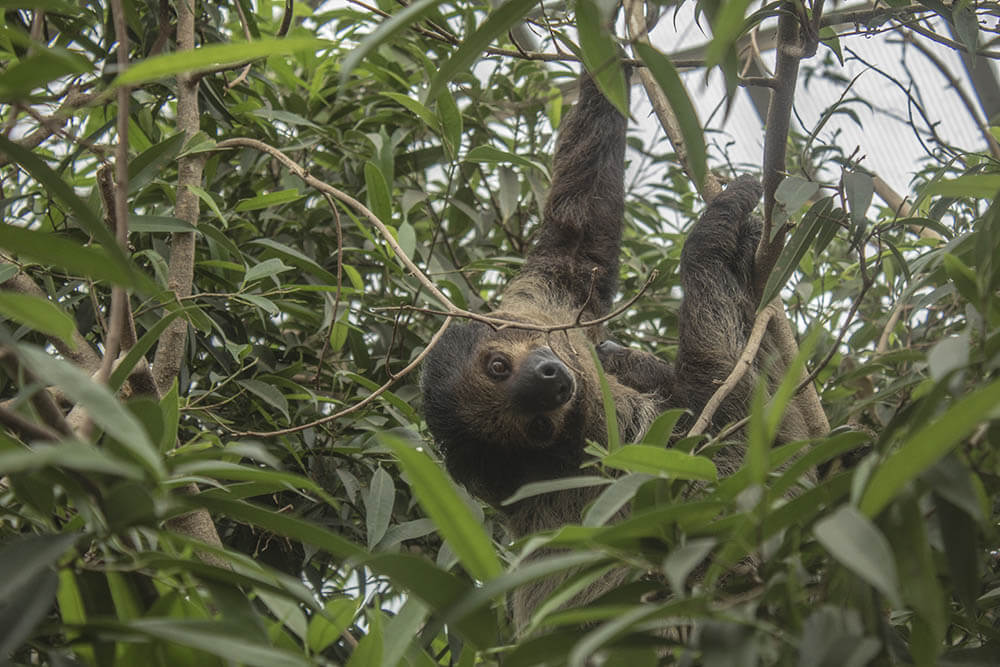
Conclusion
Sloths are slow-moving mammals that feed mostly on leaves, making them a special type of herbivore known as folivores. However, they also consume other types of plant matter such as shoots, flowers, and buds.
While typically acknowledged as herbivores, sloths have also been observed to occasionally consume animal matter such as insects, small lizards, and bird eggs.
Their diet may not be too interesting, but sloths are amazing creatures that continue to pique the curiosity of both scientists and animal enthusiasts alike!
